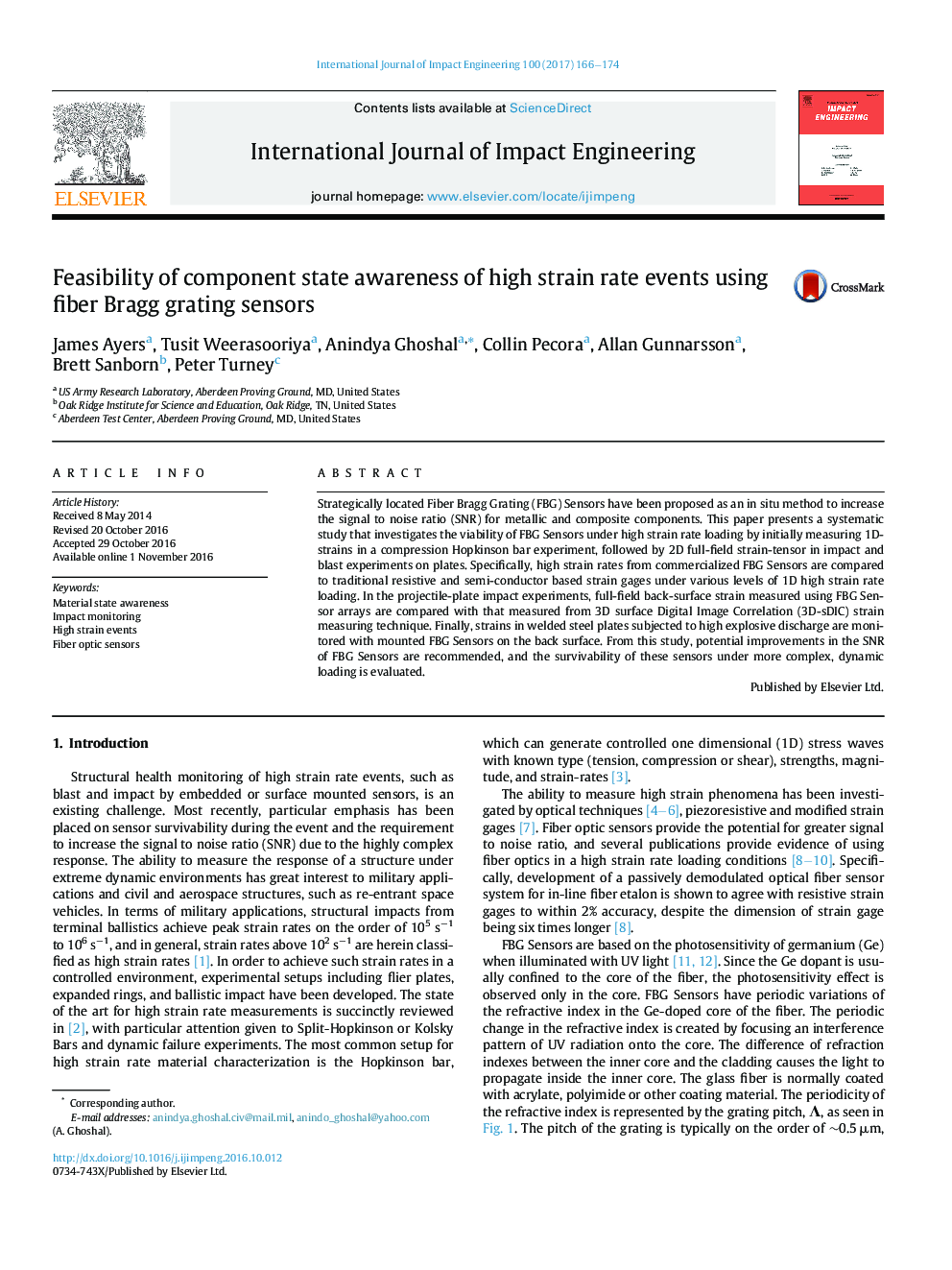| Article ID | Journal | Published Year | Pages | File Type |
|---|---|---|---|---|
| 5015644 | International Journal of Impact Engineering | 2017 | 9 Pages |
Abstract
Strategically located Fiber Bragg Grating (FBG) Sensors have been proposed as an in situ method to increase the signal to noise ratio (SNR) for metallic and composite components. This paper presents a systematic study that investigates the viability of FBG Sensors under high strain rate loading by initially measuring 1D-strains in a compression Hopkinson bar experiment, followed by 2D full-field strain-tensor in impact and blast experiments on plates. Specifically, high strain rates from commercialized FBG Sensors are compared to traditional resistive and semi-conductor based strain gages under various levels of 1D high strain rate loading. In the projectile-plate impact experiments, full-field back-surface strain measured using FBG Sensor arrays are compared with that measured from 3D surface Digital Image Correlation (3D-sDIC) strain measuring technique. Finally, strains in welded steel plates subjected to high explosive discharge are monitored with mounted FBG Sensors on the back surface. From this study, potential improvements in the SNR of FBG Sensors are recommended, and the survivability of these sensors under more complex, dynamic loading is evaluated.
Keywords
Related Topics
Physical Sciences and Engineering
Engineering
Mechanical Engineering
Authors
James Ayers, Tusit Weerasooriya, Anindya Ghoshal, Collin Pecora, Allan Gunnarsson, Brett Sanborn, Peter Turney,
